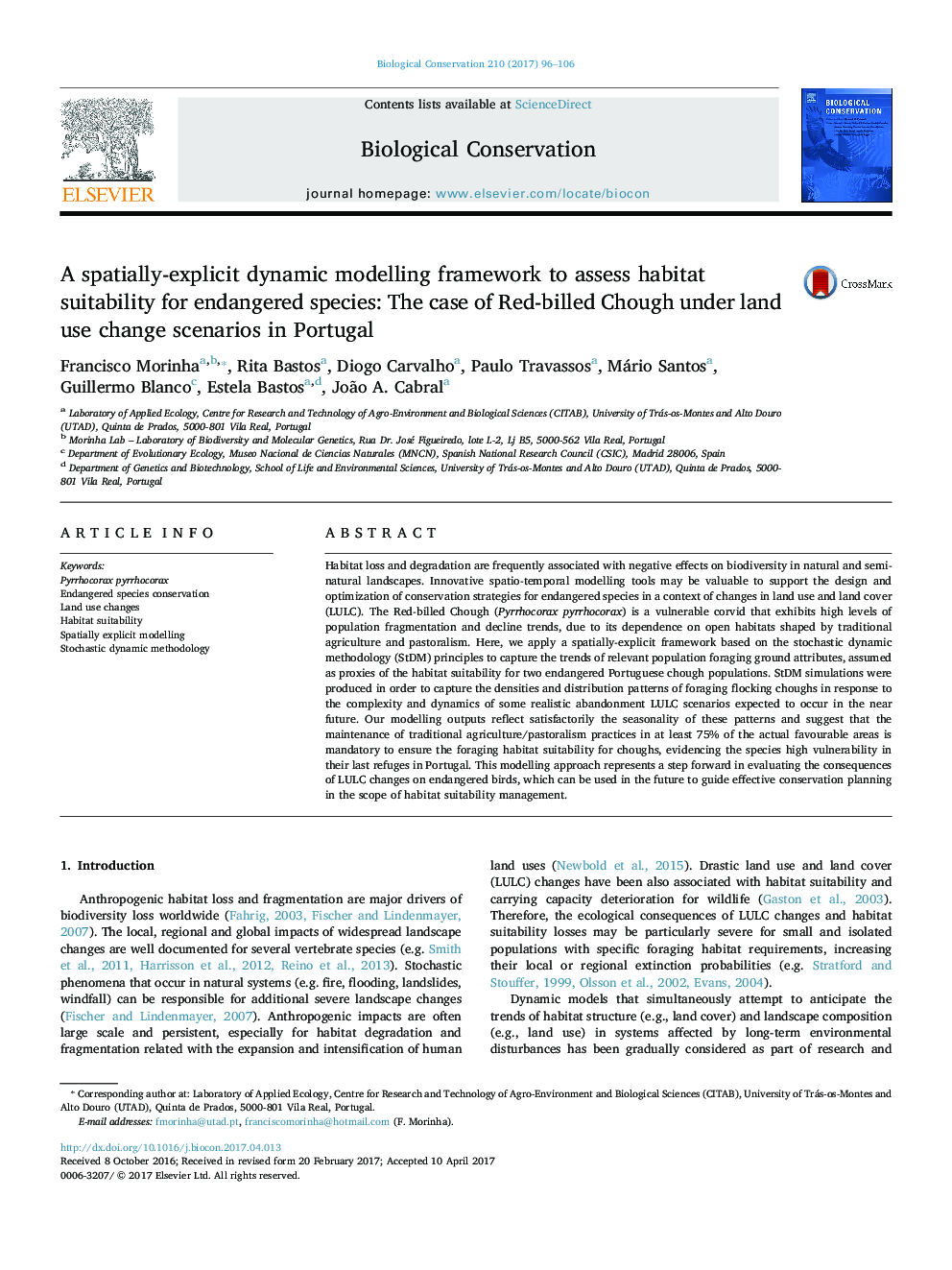| Article ID | Journal | Published Year | Pages | File Type |
|---|---|---|---|---|
| 5743210 | Biological Conservation | 2017 | 11 Pages |
Abstract
Habitat loss and degradation are frequently associated with negative effects on biodiversity in natural and semi-natural landscapes. Innovative spatio-temporal modelling tools may be valuable to support the design and optimization of conservation strategies for endangered species in a context of changes in land use and land cover (LULC). The Red-billed Chough (Pyrrhocorax pyrrhocorax) is a vulnerable corvid that exhibits high levels of population fragmentation and decline trends, due to its dependence on open habitats shaped by traditional agriculture and pastoralism. Here, we apply a spatially-explicit framework based on the stochastic dynamic methodology (StDM) principles to capture the trends of relevant population foraging ground attributes, assumed as proxies of the habitat suitability for two endangered Portuguese chough populations. StDM simulations were produced in order to capture the densities and distribution patterns of foraging flocking choughs in response to the complexity and dynamics of some realistic abandonment LULC scenarios expected to occur in the near future. Our modelling outputs reflect satisfactorily the seasonality of these patterns and suggest that the maintenance of traditional agriculture/pastoralism practices in at least 75% of the actual favourable areas is mandatory to ensure the foraging habitat suitability for choughs, evidencing the species high vulnerability in their last refuges in Portugal. This modelling approach represents a step forward in evaluating the consequences of LULC changes on endangered birds, which can be used in the future to guide effective conservation planning in the scope of habitat suitability management.
Keywords
Related Topics
Life Sciences
Agricultural and Biological Sciences
Ecology, Evolution, Behavior and Systematics
Authors
Francisco Morinha, Rita Bastos, Diogo Carvalho, Paulo Travassos, Mário Santos, Guillermo Blanco, Estela Bastos, João A. Cabral,
